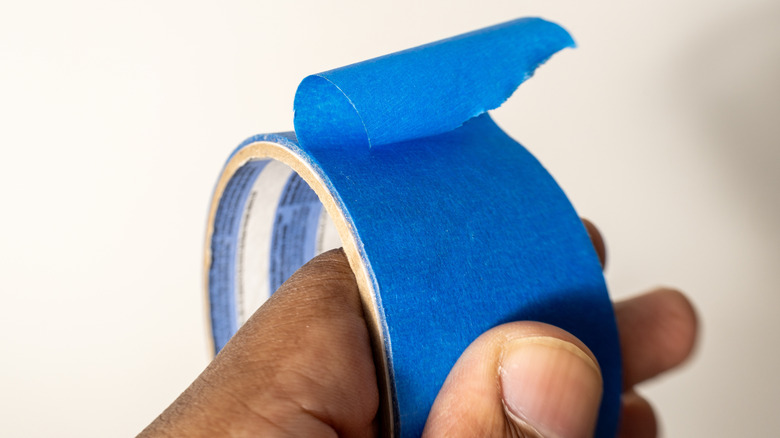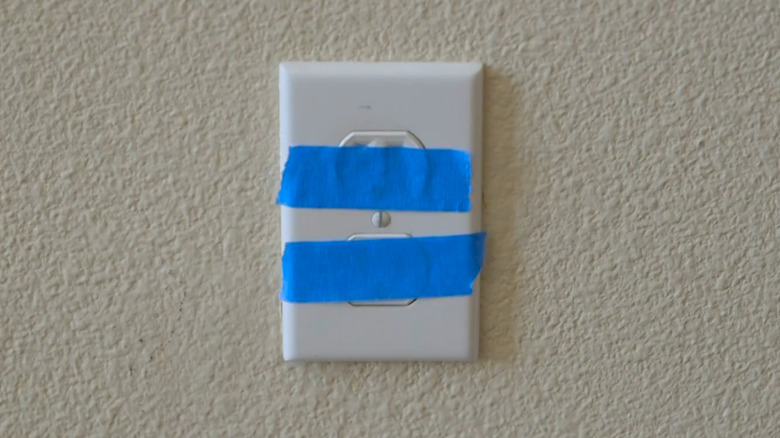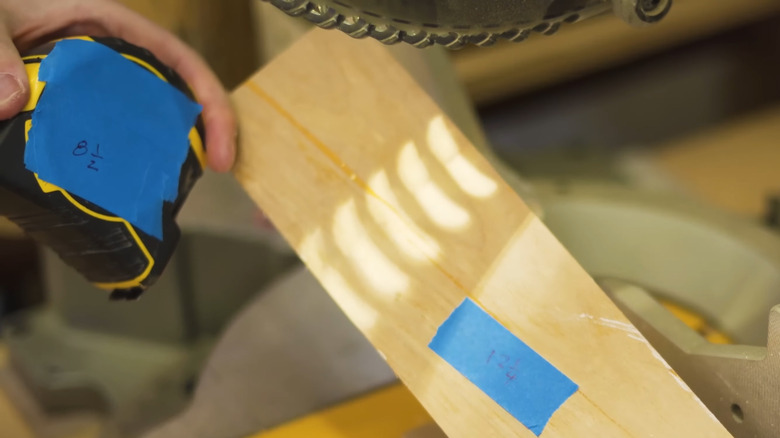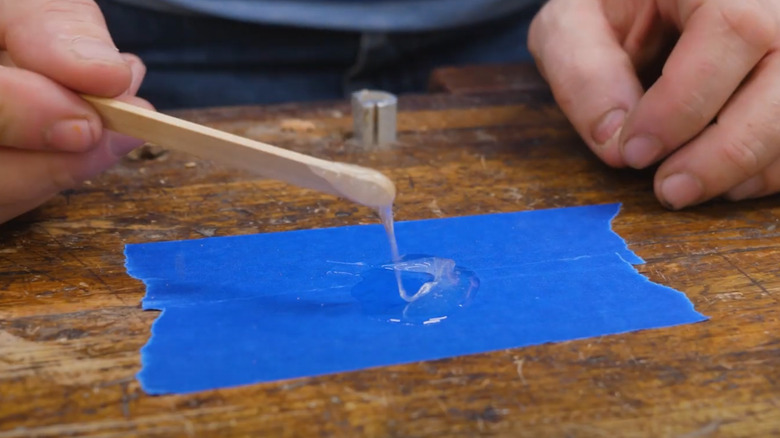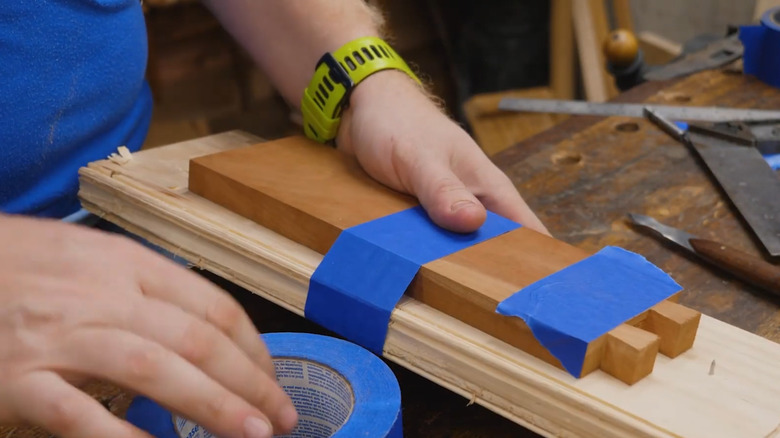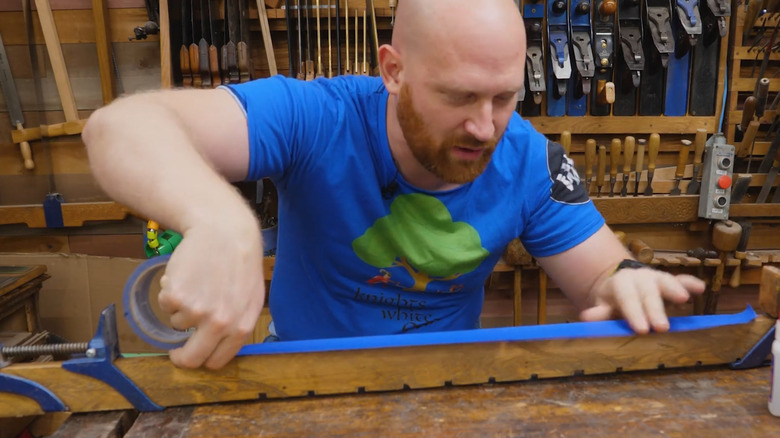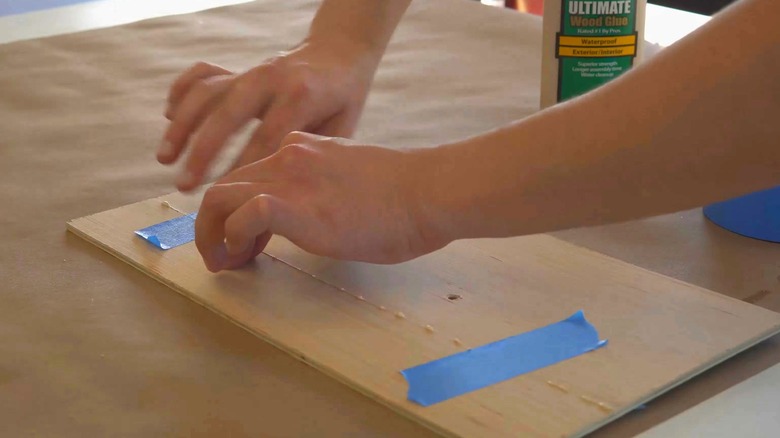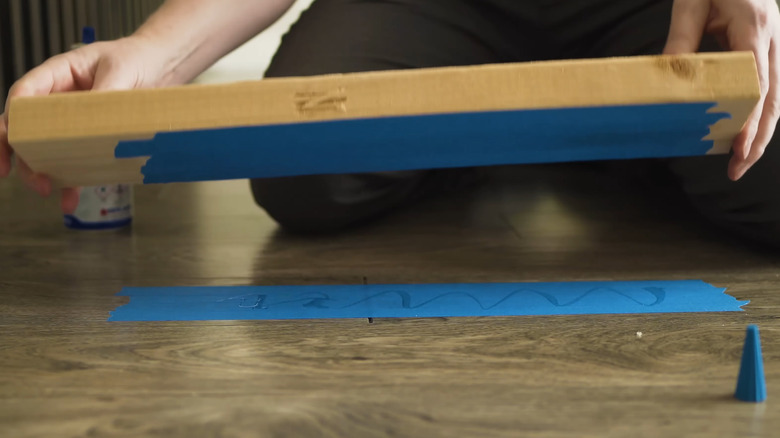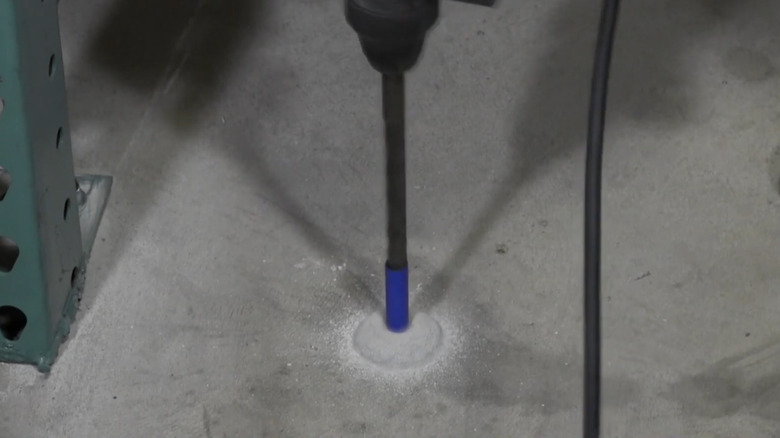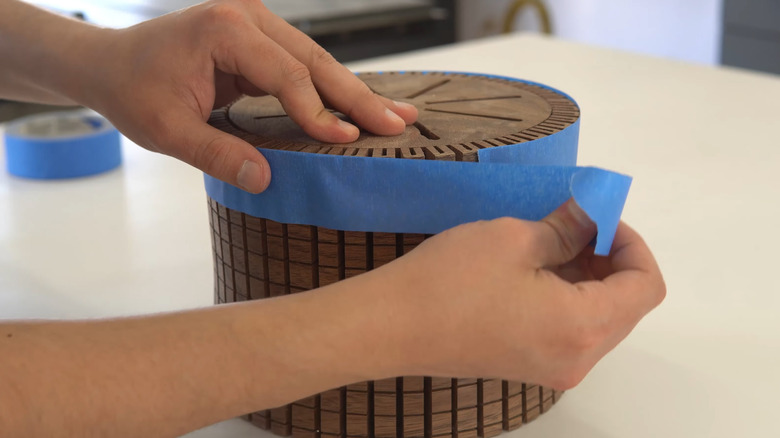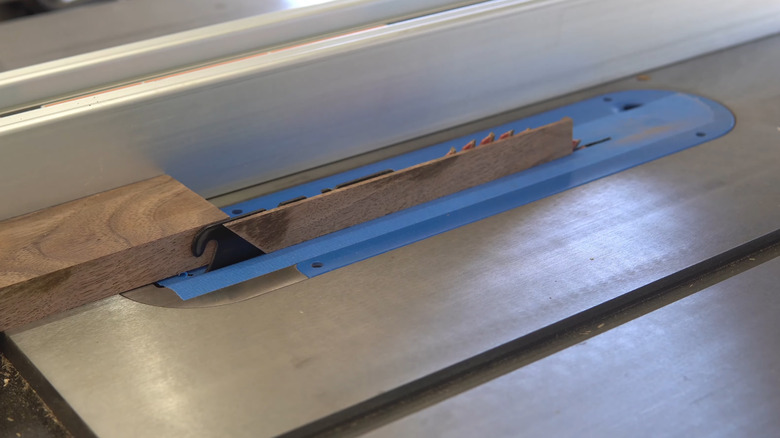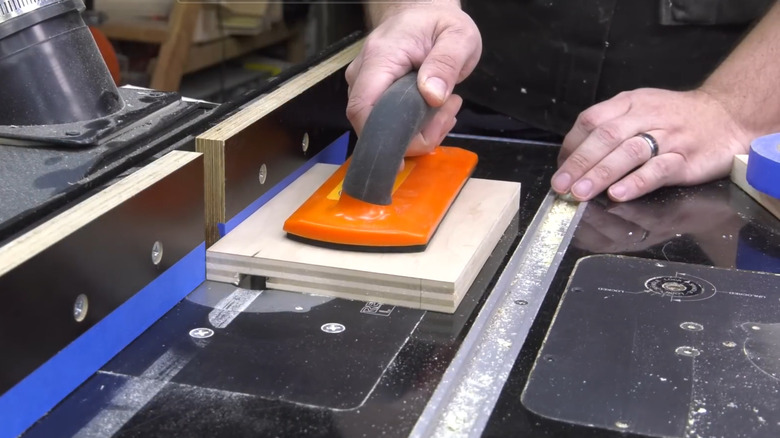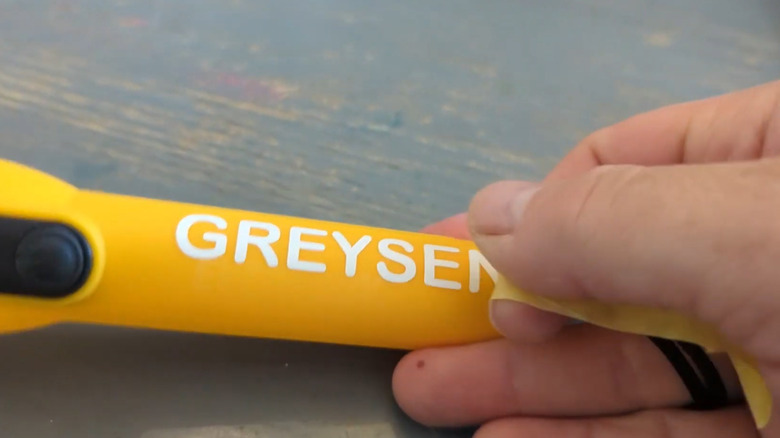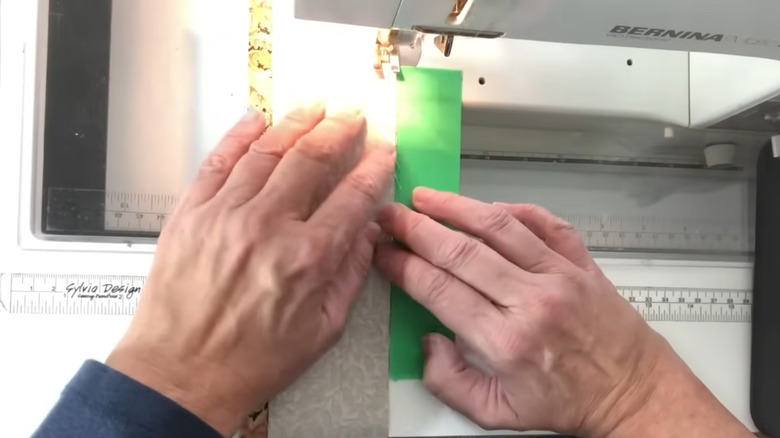18 Painter's Tape Hacks You'll Wish You Used Sooner
There are many kinds of tape, and they all do specific jobs. The average DIYer's workshop or garage might include double-sided tape, drywall tape, duct tape, electrical tape, filament tape, foil tape, packing tape, Teflon tape, Velcro tape, and painter's tape. But while drywall tape might be of limited utility if you wander too far from sheetrock, painter's tape seems to get more useful the longer you stare at it. It's highly visible (usually blue), tends to lie flat, peels off easily without leaving residue, and everybody has it ... probably because of something they intended to paint but never did.
And, of course, any excuse not to paint is a good one, so here are a bunch of ways to run out of painter's tape. You'll think of dozens more along the way. Our favorite is the tape measure notepad, which involves sticking a bunch of strips to your measuring tape so you can write down your measurements as you work. You can doubtless dream up many note-taking and label-making variations, and remember that making labels is a great hack to make the most of your painter's tape when nearing the end of the roll. Other ideas include using painter's tape labels to keep your fridge organized, to mark your laser level grade rod, to jot down supplies that need to be reordered, or to mark the tools that are yours on a busy worksite. If the need is completely unavoidable, use it to mask off areas while you paint. There are actually some hacks you can use to avoid using masking tape while painting, but that may seem misguided. You can only do one thing with paint, but painter's tape can do almost anything.
Cover electrical outlets and lock drawers
Painter's tape is usually for protecting surfaces and fixtures from paint, but in a pinch it works for protecting you (or, more likely, your children) from the hazards of whatever you're taping. Nothing replaces proper electrical outlet safety covers or drawer locks, but as a temporary solution, covering a receptacle or taping a drawer or cabinet door closed with blue tape works a treat. You can probably think of other safety measures that blue tape will help with in the home and workshop.
Make a scratch pad for your tape measure
There are a lot of great DIY-related tricks below, but this hack is a favorite, and it alone is worth the price of admission. You have measured something for a cut and completely forgotten the measurement by the time you got to the saw — or remembered it incorrectly. This simple, brilliant idea is to put layers of tape on your tape measure and write the measurements on it. Use the tape strips for individual measurements so you can peel them off and stick them to your cut boards.
Improvise an epoxy mixing tray
You know when someone uses a lot of two-part epoxy, because they have a drawer or box somewhere with 500 bits of plastic clamshell packaging. It appears to be hoarding behavior, but it's actually just a place to toss containers that can be used to mix epoxy — something disposable, because no surface is coming back from that. A better idea: use the blue tape for mixing the epoxy and then — here's the genius bit — keep the tape with dried epoxy so you can test its cure without disturbing the workpiece.
Improvise a clamp
In this hack, simply use blue painter's tape as a clamp. If it gets glue on it, whatever. This trick is particularly good for wrapping up frames and project bodies that involve a lot of mitered cuts, from a simple box to elaborate multi-sided objects. It's a particularly good way to make faux beams — just roll up the mitered sides, remove the tape when the glue is dry, and burnish the corners.
Protect real clamps from glue
Glue has a complicated relationship with clamps. The clamps are indispensable for making some glues adhere well, but the more firmly the workpiece is clamped, the more likely glue squeeze-out is going to drip on the clamp or, worse, stick it to a table. Protect your clamp with blue painter's tape wherever glue might find its way.
Edge-clamp thin panels
One reason you don't often see anyone edge-gluing thin panels together is that such a thing is practically impossible to clamp and glue properly. Enter the painter's tape solution. Place your boards next to each other and carefully tape one side together with painter's tape. Turn it over, open the joint, and add wood glue. Then close the assembly flat again and tape the other side until the glue dries. You might not need this hack often, but it's good to have a solution if the situation arises.
Blue and glue something
We first ran across this trick as part of a way to DIY wooden vent covers. The idea is to apply the tape to two surfaces — a two-by-four and your wood flooring, for example — and then permanently glue the two tape strips together, making a permanent bond between the two pieces that can be easily broken because the tape also creates a temporary bond. It's even simpler than it sounds.
Close gaps in flooring
Now that you know the blue and glue trick, you might still be wondering why you'd want to attach a 2x4 to your floor ... even temporarily. Using the tape-and-CA-glue trick to attach a board to a piece of flooring that has moved out of position gives you an easy way to tap the board back into place without damaging the floor.
Guide your caulking to success
However good you are at running a bead of caulk, you're probably not as good as a pure novice using this trick. Running a strip of tape along surfaces on either side of your caulk line, laying down a bead of caulk and smoothing it, and then removing the tape while the caulk is wet leaves a perfect line that doesn't look like the work of a mere human.
Gauge the depth of your drill bit
The oldest tricks are often the best tricks, and this one has been around for a while. There are times when you're drilling a hole that isn't intended to go all the way through your workpiece, or which might run into something undesirable at the wrong depth. To prevent drilling too deep, measure the intended depth along the shaft of your drill bit from the tip, mark it with a bit of blue painter's tape around the bit, and simply stop drilling when you reach the correct depth.
Protect screw heads
If you want to drive a pragmatic DIYer to distraction, soft metal screw heads are the place to start. Some decorative and all brass screws are infuriating to use and certainly can't be removed and re-seated later, since even an indignant stare will cause their heads to strip out. However, there's a quick fix. Just loosely stick a bit of blue tape to the head of the screw, push the driver or bit into it, and drive it slowly.
Measure the circumference
With painter's tape, there's a quick and practical way to accurately measure an object's circumference. Simply put the tape around the object so that it's level and it overlaps a bit at the ends, cut cleanly through both layers of tape, then remove and measure the remaining strip. It seems like there are endless opportunities to use this sort of approach for measuring all manner of oddly contoured things.
Make a temporary zero-clearance insert
Table saw zero-clearance inserts are a wonderful and terrible thing — wonderful because they help prevent tear-out and keep small cutoffs from dropping into the machinery of your table saw, and terrible because they're frustratingly limited to only a single bevel angle. This blue tape solution probably won't help much with tear-out, but keeps your work above the table. Simply stick a piece of tape over your everyday throat plate, raise the spinning blade through it (and make a slit for the riving knife), and your zero-clearance insert is set.
Make micro-adjustments in your woodworking joinery
A router table is a great way to speed up precise woodworking joinery, but sometimes things are a little too precise. If you have a routed joint that's a little too tight — fitting a 1/2-inch board into a 1/2-inch dado, for example — you can very slightly widen the dado using two strips of masking tape. Each layer is about 5/1000ths of an inch, a much finer adjustment than you want to try by hand or even with a jig. Use multiple layers to fine-tune the width even more.
Use painter's tape to accurately drill hardware holes
You might have seen a similar trick to this used to transfer hanger locations from the back of a frame to a wall. This approach also solves a common problem with handle hardware; when you put the hardware in place, there's no way to accurately mark the hole location because the handle itself is in the way. Transfer the hole locations by marking them on a strip of painter's tape, then sticking that to the drawer front, cabinet door, or other piece you're adding the handle to and drill your holes.
Make transfer tape for vinyl-cutter projects
One of the frustrations with vinyl-cutting machines is the bottomless well of branded products that can make your $.01 decal cost six bucks. One of those products is transfer tape, which is great stuff, but is also fundamentally just tape that isn't very strong — like painter's tape. For smaller vinyl pieces, it's a cost-effective way to get the job done. Take a little extra care to make sure the vinyl adheres to the tape properly, but otherwise the process is the same.
Create a fabric-sewing guide
Whether you're sewing clothes every day or sewing a snap-down cover for your boat once every five years, everyone needs to be able to sew in a straight line. And there are a couple of tape hacks that can help. The first is to create a "sewing ledge," a guide that keeps your fabric straight as it enters the sewing machine. The second type of guide goes on the fabric itself rather than the sewing machine. You're basically using the tape as a quick and clean visual guide in place of tailor's chalk or similar.
Give up rollers for lint
When you're in cleaning mode rather than the mess-making modes of crafting and DIY projects, painter's tape can help, too. To make a lint roller on the fly, just wind some painter's tape around a cardboard tube from toilet paper or paper towels sticky-side-out. You can stop there, or get fancy and fashion a handle from an old hairbrush, a bit of PVC pipe, or whatever you have handy.
